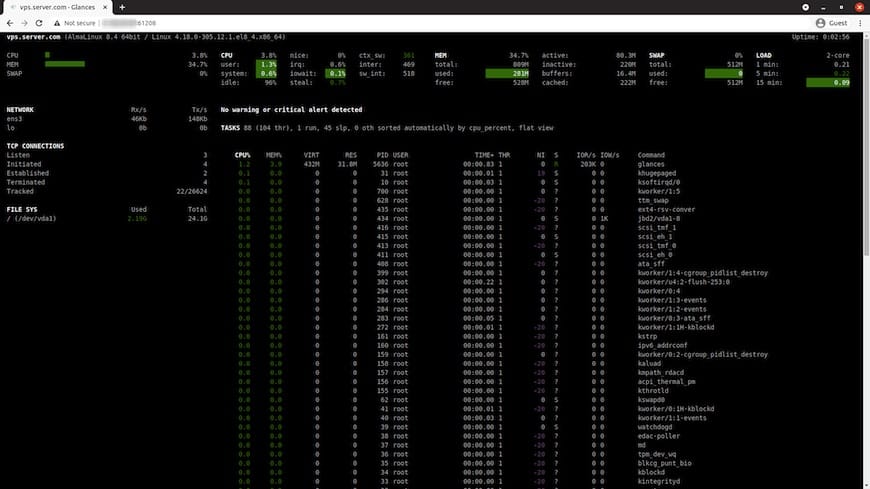
In this tutorial, we will show you how to install Glances on Debian 11. For those of you who didn’t know, Glances is a cross-platform monitoring tool for process monitoring, system resources such as CPU, Disk I/O, File System, Load Average, Memory, Network Interfaces, and processes.
This article assumes you have at least basic knowledge of Linux, know how to use the shell, and most importantly, you host your site on your own VPS. The installation is quite simple and assumes you are running in the root account, if not you may need to add ‘sudo‘ to the commands to get root privileges. I will show you the step-by-step installation of the Glances command-line monitoring tools on a Debian 11 (Bullseye).
Prerequisites
- A server running one of the following operating systems: Debian 10 or Debian 11.
- It’s recommended that you use a fresh OS install to prevent any potential issues.
- SSH access to the server (or just open Terminal if you’re on a desktop).
- A
non-root sudo useror access to theroot user. We recommend acting as anon-root sudo user, however, as you can harm your system if you’re not careful when acting as the root.
Install Glances on Debian 11 Bullseye
Step 1. Before we install any software, it’s important to make sure your system is up to date by running the following apt commands in the terminal:
sudo apt update sudo apt upgrade
Step 2. Installing the Required Packages.
Before installing Glances for your Debian, you need to make sure you have installed the Required dependency packages:
sudo apt install python3 python3-dev python3-jinja2 python3-psutil python3-setuptools hddtemp python3-pip lm-sensors
Step 3. Installing Glances on Debian 11.
By default, Glances is available on Debian 11 base repository. So, now run the following command below to install the Glances packages on your Debian system:
sudo pip3 install glances
Verify the installation of Glances:
glances --version
Step 3. Accessing Glances System Monitor on Debian.
Once successfully installed, you can run glances in standalone mode using command line access:
glances

If you want to remotely monitor a Linux machine, called a server, from any device with a web browser, just run the server with the -w option:
glances -w
Output:
root@idroot:~# glances -w Glances Web User Interface started on http://your-IP-address:61208/
You can set a password for the web-based monitor using the following command below:
glances -w --password
Congratulations! You have successfully installed Glances. Thanks for using this tutorial for installing the latest version of the Glances on Debian 11 Bullseye. For additional help or useful information, we recommend you check the official Glances website.